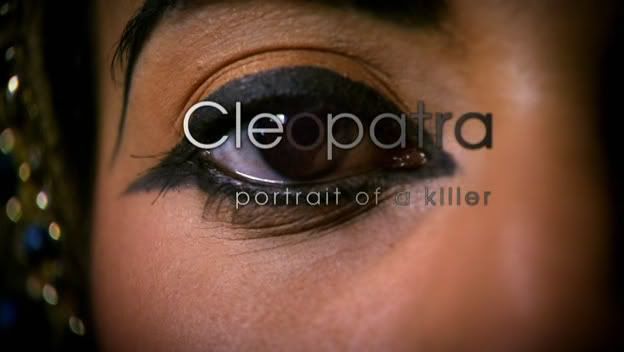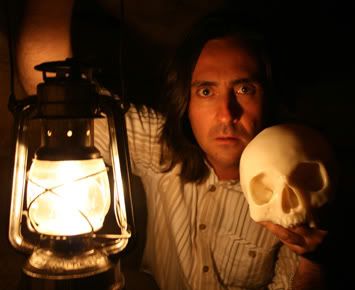Rating: | ★★★★★ |
| Category: | Movies |
| Genre: | Documentary |
 Cleopatra: Portrait of a Killer.
Cleopatra: Portrait of a Killer. The very title of the latest BBC documentary draws instant connotations.
It’s not everyday that the most famous woman in history and a 19th century cut-throat villain would merge in the consciousness. But that illustration floods into one’s head as the chosen BBC subtitle reminds of Patricia Cornwell’s famous 2002 Casebook on Jack the Ripper.
The documentarian Neil Oliver would have us believe that Cleopatra the Seventh was capable of showing the very same malice and cold calculations as the unidentified killer.

To those of us wondering about the two thousand years of speculation over love, beauty, betrayal, darkness, and truth, and whether Cleopatra was a skilled politician or ruthless slayer, the title may come as a disappointing giveaway. Thankfully this docudrama has a lot more to say.
A Discovery in Turkey
The discovery of a tomb in Ephesus, a once glorious Roman capital ten times the size of Pompeii but now in Turkey, is a jump-off point for some refreshing anthropological and archaeological conclusions. These summations relate to the history of Cleopatra’s younger sister Arsinoe (Karima Gouit).
In the early 1920s human remains were found in a sarcophagus filled with water by archaeologists who took only the skull back to Germany. It subsequently became lost in the chaos of WWII but, somewhat frugally, notes and photographs of its dimensions survived.
Lucky, because the very fact that it was customary to bury the dead outside the city walls of Ephesus (only four men of great standing had been laid to rest within) means the discovery of these remains belonging to a young woman in a remarkable tomb there leads to a variety of questions. Each piece of this delicate find becomes essential if a picture can emerge of a period in which the worlds of the Pharaohs and the Romans violently collided.
The most startling revelation this documentary offers is that the legendary Cleopatra herself (Camelia Ben Sakour) may have been part-African and not from Greek Caucasian descent as previously thought.
 Leading the team in discovering the body’s true identity, Dr Hilke Thür
Leading the team in discovering the body’s true identity, Dr Hilke Thür from the Austrian Academy of Science claims: “The results of the forensic examination and the fact that the facial reconstruction shows that Arsinoe had an African mother is a real sensation which leads to a new insight on Cleopatra’s family and the relationship of the sisters Cleopatra and Arsinoe.”
Unfortunately, this re-enactment only pays lip-service to the possibility of half-siblings and the undertones of racial tensions rising to the surface as one possible reason for the powerful family’s fragmentation.
Whether William Shakespeare’s tragedy Antony & Cleopatra adorns the boards or Joseph L. Mankiewicz’s lens captures a young queen’s struggle to resist the dark forces of imperialism in Cleopatra (1963), an eagerness to embellish overcomes hard fact.
That’s partly due to the mystique of Cleopatra VII as an ancient figure, and even in the works mentioned above she holds an air of foreign wonder and veiled secrecy. This is an inscrutability that Cleopatra: Portrait of a Killer seeks to erase, replacing it with a dark heart filled with conspiring and calculating murder.
Sibling Rivalry
This recount focuses on a torrid relationship between the two sisters. After the death of Cleopatra’s father in 51BCE, she and her younger brother Ptolemy XIII (Habib Yassine Adjou) became united in rule and were to be married. After a dispute over the increasing influence of the emergent superpower in Rome and consequent civil war between the pair, Cleopatra allied herself against her brothers and sister and subsequently into the arms of the much older Julius Caesar (Daniel Pellean) in 48BCE.
Revenge is never far from myths surrounding the Ancient, and here Neil Oliver attempts to make that emotion stick by suggesting that Cleopatra killed all three of her siblings for fear of a challenge to her desired omnipotence.
Oliver calls his first witness to the stand in the form of Roman historian Cassius Dio, played by the purple-robed and stereotypically robust actor Ian McNeice. Whilst mesmerizingly holding court with future scholars as he details actual writings and scripture – albeit scribed some 300 years after the event – even he pales in comparison to the sort of computer generated imagery on display.
Whilst it may not have the seminal and startling effect of another BBC series like Walking with Dinosaurs, the use of computer graphics greatly aids and augments the story as it unfolds.
Cinematic elements complement Oliver’s narration as the camera pulls back to reveal the full-circular extent of the remains at Ephesus. Jump cuts show the sacred and vast steps of The Temple of Artemis, focusing finally on a frame of Arsinoe’s listless and bloodied features.
Convincing sets with stone pillars, orange flames and silk drapes blow against blue sky backgrounds and red/gold carpets of sand. It’s refreshing to see a documentary’s visual elements unpolluted with place names and other irreverent text graphics breaking up the camera’s intentions.
Whether it’s the sort of CGI showing Artemis in the background as Oliver sails across to a final destination and supposed sanctuary for Arsinoe after her banishment from Egypt, or the computer technology which helps uncover the evidence, it's impossible to imagine the painstaking processes of old in recounting historic events via prop & monograph.
It’s through another graphical recreation that Arsinoe’s final resting place is revealed. As memories of her famous victory over Caesar at the Great Pharos Lighthouse swim at the back of our minds, 107 pieces of the skeleton’s tomb are mapped out ready for assembly via a grand puzzle game.
If anymore evidence was needed that this painstaking exercise was worth it, it comes in the form of a torch found within in the tomb itself: a stone creation shaped like a Papyrus plant, indigenous to Egypt.
Even before reconstruction is complete the outcome simply screams celebration of Arsinoe’s victory at the lighthouse with a tomb that fittingly mimics that seventh wonder of the world. With her final resting place confirmed, what is lacking is any inclination of Cleopatra’s motivations to kill her own sister beyond that of fear. With the knives out for Caesar she turns to Mark Antony and with his help commits what is noted in the documentary as “the biggest crime of the period” in extinguishing the flame of her young sibling on the steps of the autonomous sanctuary of Artemis in 41BCE.
Technology’s final contribution to Oliver’s journey over sea, desert, ruins and tombs, culminates in the unlikely surroundings of the University of Dundee, where state-of-the-art technology caps this epic passage by creating a 3D model of Arsinoe’s missing cranium.
Years of hard work and forensic toil for medical expert Dr Fabian Kanz and Dr Hilke Thür are washed away in seconds the moment they are able to hold the replica skull. Almost certainly for our benefit alone, a 2D example then has skin, hair and facial features added as if to capture the emotions of the audience. An unnecessary act; if engagement with the subject has not already been achieved by this point it never will.
What is brought to life is not the forgotten princess alone, but the idea of an alternative history whereby the young Arsinoe, and not Cleopatra, is the most famous woman in the world.
RELATED VIDEOS:
http://www.youtube.com/watch?v=xAAtJzXvX1c
http://www.youtube.com/watch?v=tZTPa-A4l1E
http://www.youtube.com/watch?v=1Di_fblZz0s
http://www.youtube.com/watch?v=EwwRQlrBMuE
http://www.youtube.com/watch?v=-JnVdGUZOEA
http://www.youtube.com/watch?v=2xzic_CV4Jc
Acknowledgments:
Andrew McWhirter
Images courtesy of Lion Television.
No comments:
Post a Comment